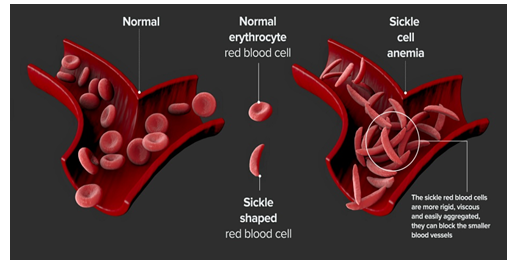

Weekly Current Affairs: Week- 2 December 2023 (24 Topics)
Context
Recently, the U.S. Food and Drug Administration approved two treatments namely, Casgevy and Lyfgenia, for the treatment of sickle cell disease (SCD) in patients.
About
About the information:
- These are the First Gene therapies approved for the treatment of sickle cell.
- The cell-based gene therapies were approved for the treatment of sickle cell disease (SCD) in patients 12 years and older.
- Additionally, one of these therapies, Casgevy, is the first FDA-approved treatment to utilize a type of novel genome editing technology, signaling an innovative advancement in the field of gene therapy.
How these treatments work?
- Casgevy, a cell-based gene therapy, is approved for the treatment of sickle cell disease in patients 12 years of age and older with recurrent vaso-occlusive crises.
- Casgevy is the first FDA-approved therapy utilizing CRISPR/Cas9, a type of genome editing technology.
- Patients’ hematopoietic (blood) stem cells are modified by genome editing using CRISPR/Cas9 technology.
- CRISPR/Cas9 can be directed to cut DNA in targeted areas, enabling the ability to accurately edit (remove, add, or replace) DNA where it was cut.
-
- The modified blood stem cells are transplanted back into the patient where they engraft (attach and multiply) within the bone marrow and increase the production of fetal hemoglobin (HbF), a type of hemoglobin that facilitates oxygen delivery. In patients with sickle cell disease, increased levels of HbF prevent the sickling of red blood cells.
- Lyfgenia is a cell-based gene therapy:
- Lyfgenia uses a lentiviral vector (gene delivery vehicle) for genetic modification and is approved for the treatment of patients 12 years of age and older with sickle cell disease and a history of vaso-occlusive events.
- With Lyfgenia, the patient’s blood stem cells are genetically modified to produce HbAT87Q, a gene-therapy derived hemoglobin that functions similarly to hemoglobin A, which is the normal adult hemoglobin produced in persons not affected by sickle cell disease.
- Red blood cells containing HbAT87Q have a lower risk of sickling and occluding blood flow. These modified stem cells are then delivered to the patient.
Sickle Cell Disease:
- Sickle cell disease is a group of inherited blood disorders affecting approximately 100,000 people in the U.S.
- It is most common in African Americans and, while less prevalent, also affects Hispanic Americans.
- The primary problem in sickle cell disease is a mutation in hemoglobin, a protein found in red blood cells that deliver oxygen to the body’s tissues.
- This mutation causes red blood cells to develop a crescent or “sickle” shape.
- These sickled red blood cells restrict the flow in blood vessels and limit oxygen delivery to the body’s tissues, leading to severe pain and organ damage called vaso-occlusive events (VOEs) or vaso-occlusive crises (VOCs).
- The recurrence of these events or crises can lead to life-threatening disabilities and/or early death.
|
The US Food and Drug Administration (FDA)
|
More Articles



